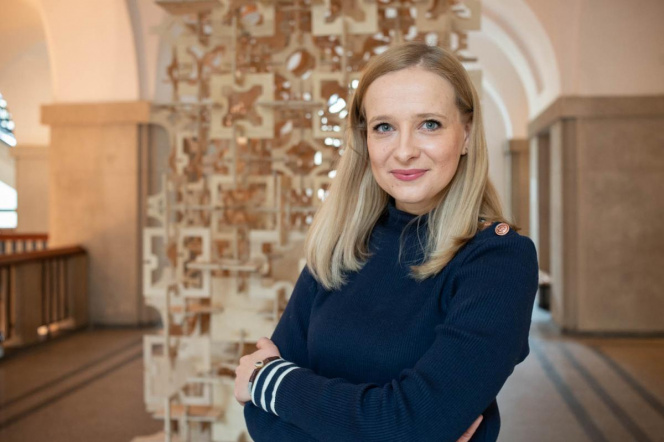Date added: 2021-03-18
Mathematics for Neurobiology - Interdisciplinary Research at the Institute of Applied Mathematics

Dr. Justyna Signerska-Rynkowska from the Division of Differential Equations and Applications of Mathematics conducts research in mathematical neurobiology. The research is, among others, a part of the (National Science Centre, Poland) SONATA grant “Challenges of low-dimensional dynamics in hybrid neuron models” awarded to her in May 2020. In this case, the theory of low-dimensional dynamical systems (e.g. S-unimodal interval maps, rotation theory, singularly perturbed systems), as well as the theory of almost periodic functions are effectively applied to the analysis of models of biological neurons, in particular to map-based models and the so-called hybrid models. The latter ones are a combination of continuous dynamical systems, accounting for input integration, and discrete “resets” accounting for spikes (action–potentials) emission. It turns out that the questions about the nature of the spike-pattern generated by a neuron, types of neuron excitability and other related electrophysiological phenomena are reflected, for example, in the behaviour of rotation numbers and rotation sets of induced circle/interval mappings or maps of the real line with almost periodic displacement, their symbolic dynamics or by phase space methods for hybrid or piecewise smooth dynamical systems. The studied classes of models cover many popular (nonlinear) models commonly used in computational and theoretical neuroscience (e.g. the adaptive-exponential Brette-Gerstner model or Izhikevich model). Moreover, the hybrid systems themselves are a fairly new interesting field at the interface between mathematics, other sciences and industrial applications.
Today, there are many different models of nerve cells. Due to this multitude, it is important to classify these models primarily in terms of the behaviours, identified experimentally in real neurons, which particular models may or may not display. In turn, describing dynamical and geometric mechanisms leading to these behaviours in a given model may lead to new hypotheses that are next verified experimentally. An example may be the recent results obtained in the project regarding the so-called type III excitability properties (according to the Hodgkin's classification). Therefore, in addition to new challenges for mathematicians, research results and developed methods may be of interest to other scientists, possibly also outside the field of neuroscience.
The project team also includes a PhD student Frank Llovera Trujillo from the GUT Doctoral School. Part of the research is carried out in international cooperation, mainly with scientists from France and the United States, and is a continuation of Justyna’s research dating back to her post-doctoral internship in Paris at INRIA (National Institute for Research in Digital Science and Technology) and Collège de France, where she worked with the Mathematical Neuroscience Team.
This article belongs to the #researchFAP&M series aiming to present the topics of scientific projects run by the members of the Faculty of Applied Physics and Mathematics of Gdańsk University of Technology.



